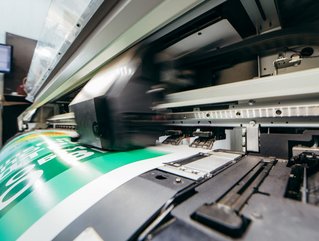New technologies supporting the print industry

With the economy in a state of flux, businesses must adapt in order to survive, seeking alternative solutions to the daunting set of obstacles ahead of them. Pressure is mounting on long-standing industries that have been relied upon for years, and it is companies who ignore the warning signs that will bear the consequences.
Why is the print industry recession a threat?
The print industry is feeling the full force of external pressures, as its incumbents face a challenging few months they will be fortunate to emerge from unscathed. Soaring costs thanks to rampant inflation, material shortages, and high-interest rates, plus a contraction of demand due to the current economic climate, has left the sector reeling and on the verge of capitulation.
In years gone by, the industry would have expected a bailout to help turn the tide, but to hope for the same during the present downturn is nothing short of naive.
The government has already spent big on other industries in dire need of help, such as extending its £100m UK Seafood Fund through to 2025 to support fishing and seafood sectors. Following the recent announcement of a £40bn bailout to help ease the energy crisis, industries deemed less important will see little to nothing in the form of handouts.
This spells disaster for the print industry, where optimism is at an all-time low and there is nothing on the horizon to suggest this will change.
The print companies that survive will be those that adapt, and the same applies to their customers. So, what does this mean for the manufacturing industry, that relies heavily on the print and paper industries to run day-to-day operations?

George Haddaway, Director for Western Europe at M-Files
Make paper a thing of the past
First and foremost, manufacturers should ditch paper-centric practices in favour of a more modern and digitised approach, so that they do not absorb steep rises in the cost of printing and paper. The average office worker still uses 45 sheets of paper per day, which means many businesses are in the firing line if they don’t act quickly.
Digital transformation holds the key here, and organisations should evaluate current processes and identify areas where their practices are outdated. For example, businesses whose filing system consists of hard copies and physical documents should pinpoint this as a vulnerability and a waste of resources.
This issue can be easily solved by moving filing cabinets online in the form of an innovative document management platform. By leveraging SaaS solutions and the offerings of third-party vendors, companies can quickly and easily transfer hard copies to shared digital files, accessible to all employees.
As a result paper becomes obsolete, with all staff members able to access the same version of a document and update this in real-time, eliminating the need to re-print and re-file a piece of work every time someone makes a change.
Other methods that can save reams of paper include switching to digital forms, encouraging the use of electronic signatures, and receiving and recording financial information online. Adopting these practices will leave businesses well placed to cope if the cost of printing and all related resources suddenly skyrockets.

Evolution leads to long-term prosperity for manufacturers
The manufacturers that transition away from paper to avoid further cost increases will reap the rewards of this in the long run. All processes that rely heavily on paper are inherently inefficient, so businesses that embrace digital transformation can revolutionise how they operate.
Overflowing filing cabinets are information black holes, with the hours spent printing and organising documents a complete waste of time, and the frequency with which important files go missing a massive burden on businesses.
Furthermore, in an age of remote and hybrid work, documents are of no use to employees based at home if they are buried in a filing cabinet that only onsite staff can access. For this reason, digitising document management processes will lead to a more seamless and productive workplace, where all colleagues can access files as and when they are needed.
Taking steps to reduce paper consumption should also be a goal for businesses looking to operate more sustainably. Digital transformation represents an actionable and easily administered win for businesses, that shows clients and customers they are taking steps to become more environmentally conscious.
Pay attention to the warning signs
A recession in the printing industry is an immediate and very real problem that will have a knock-on effect on any businesses that still place regular orders for ink, pens and paper. With the cost of doing business rapidly increasing, the last thing organisations need is a rise in operating costs that could otherwise be avoided.
Cutting down on paper usage and adopting digital processes will allow manufacturing businesses to keep their fate in their own hands, boosting long-term productivity in the process.
- Join Belden for a Free Webinar on Connected Plant Floor DataProduction & Operations
- Exotec: Warehouse Automation & The British Alcohol IndustrySmart Manufacturing
- SAP’s AI Joule set to Transform Supply Chain ManufacturingAI & Automation
- Top Ten: Diverse Companies in ManufacturingProduction & Operations






